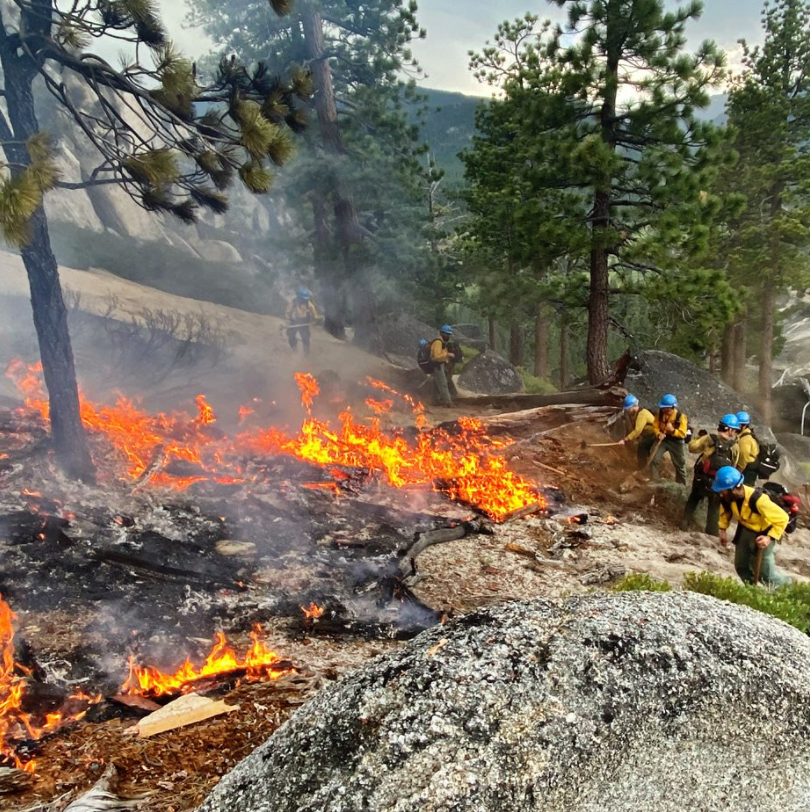


About Wildfires and Our Work
Climate change, weather extremes, prolonged drought, high winds, densely vegetated forests, and lightning storms have all been linked to severe wildfires in the U.S. and beyond. These wildfires affect the water we drink and the air we breathe. They can reduce wildlife habitat, displace entire human communities, and disrupt energy and transportation systems.
Despite its importance, there is currently limited capacity to detect, anticipate, respond to, and model wildfires. Accurate short-term predictions of wildfires have received less attention, and long-term predictions do not account for ecosystem resilience to wildfires. Berkeley Lab scientists have wide-ranging expertise to apply to developing new scientific advancements in wildfire research through a multi-disciplinary and multi-institutional research effort that addresses the predictability of the impact wildfires will have on water, air, and ecosystems.
This work leverages high-performance computing, artificial intelligence (AI), remote-sensing datasets, and advanced laboratory analytical facilities, making it possible to predict and manage wildfire effects on vegetation, carbon budgets, water and air quality, soils, and watershed dynamics.
Berkeley Lab research asks: How can forests be managed post-wildfire to optimize their value for sequestering atmospheric carbon amid ongoing climate change and extreme weather such as drought? What is the best process for converting woody plant matter like forest overgrowth and agricultural waste – material that is currently burned either intentionally or unintentionally – into liquid biofuel? Are low-cost air quality monitors effective in allowing consumers to check the pollutant levels in their own homes? Do wildfires disrupt a river system’s biogeochemistry by releasing potentially toxic chemicals that could find their way into groundwater, the source of drinking water for the vast majority of Americans? And, what effect do different forest management strategies – such as thinning or prescribed burns – have on a forest’s ability to regenerate after a wildfire?